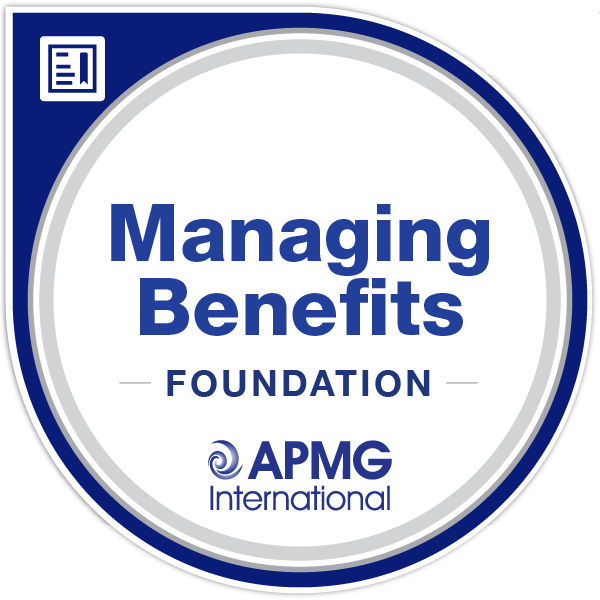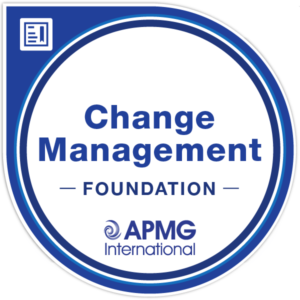Description

Managing Benefits Foundation
The framework and certification from APMG provides:
- An overview of benefits management. What it is, the case for doing it, and some common misconceptions that can limit its effectiveness in practice.
- Descriptions of the seven principles upon which to build successful approaches to benefits management, and examples of how to apply these in practice.
- Guidance on how to apply benefits management at a portfolio level, as well as at an individual project or programme level.
- Details of the five practices in the Benefits Management Cycle and examples of their application in practice.
- Advice on starting to implement effective benefits management practices and sustain progress.
Managing Benefits has been carefully designed to complement existing Best Practice in portfolio, programme and project management such as PRINCE2®, MSP®, P3O® & MoP®. It consolidates existing guidance on benefits management into one place. Meanwhile expanding on the specific practices and techniques aimed at optimizing benefits realization.
Who is it for?
The guidance is relevant to all sectors and types of project or programme, or what the guide refers to as ‘change initiatives’. The target audience includes all those with a role in ensuring best use of funds by maximizing the benefits realized from change initiatives. This multi-disciplinary group includes:
- Change leaders (e.g. senior responsible owners; directors of change)
- Change initiators (e.g. strategic planners and policy leads)
- Change appraisers and evaluators (e.g. business case developers and project appraisers)
- Change implementers/enablers (e.g. portfolio, programme & project managers)
- Change support staff (e.g. portfolio, programme; project office staff)
Benefits for Individuals
Enhanced professional competence through benefits management practices and techniques. Ability to implement methods, including knowledge of management accountancy, behavioural finance, psychology, neuro-science and systems thinking. Understanding of the seven principles which build successful approaches to benefits management and applied to projects, programmes and portfolios. The guide provides a route map to adoption of more cost-effective techniques and practices. Adept at forecasting realistic benefits to produce business cases which address business issues and objectives. In doing so provide a route to measure success. Outline costs and benefits to drive business objectives.
Benefits for Organizations
Realize benefits to improve prospects in terms of investors, clients, revenue and efficiency levels regardless of professional discipline and type of organization. Ability to demonstrate more efficient and effective practices through better use of available resources. This enhances an organization’s ability to retain motivated and skilled change management staff and to attract investors. Improved return on investment from change initiatives as more benefits are realised and sustained for longer. Enhanced confidence on the part of regulators and funding agencies – so helping ensure continued funding for change. Have an organization-wide understanding of the benefits a project or programme produces and be able to measure when they are realized.
Managing Benefits Foundation Examination
The 3-day course Foundation level course aims to ensure a participant understands the benefits management principles, practices, techniques, roles, responsibilities and documents. Specifically to know and understand:
- Firstly, the Definitions, scope and objectives of benefits management,
- Secondly, barriers to its effective practice,
- and thirdly the key success characteristics Principles upon which successful approaches to benefits management are based
The Five practices contained within the Benefits Management Cycle and relevant techniques applicable to each practice. The scope of key roles and responsibilities for benefits management and the typical contents of the main benefits management documentation. Approaches to implementation and the factors to consider in sustaining progress.
- Multiple choice format 50 questions per paper 25 marks or more required to pass (out of 50 available) – 50%
- 40 minutes duration Closed-book.
More information on the Managing Benefits Practitioner course can be seen here:









Reviews
There are no reviews yet.